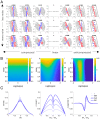Optimal utility and probability functions for agents with finite computational precision
- PMID: 33380453
- PMCID: PMC7812798
- DOI: 10.1073/pnas.2002232118
Optimal utility and probability functions for agents with finite computational precision
Abstract
When making economic choices, such as those between goods or gambles, humans act as if their internal representation of the value and probability of a prospect is distorted away from its true value. These distortions give rise to decisions which apparently fail to maximize reward, and preferences that reverse without reason. Why would humans have evolved to encode value and probability in a distorted fashion, in the face of selective pressure for reward-maximizing choices? Here, we show that under the simple assumption that humans make decisions with finite computational precision--in other words, that decisions are irreducibly corrupted by noise--the distortions of value and probability displayed by humans are approximately optimal in that they maximize reward and minimize uncertainty. In two empirical studies, we manipulate factors that change the reward-maximizing form of distortion, and find that in each case, humans adapt optimally to the manipulation. This work suggests an answer to the longstanding question of why humans make "irrational" economic choices.
Keywords: computational precision; prospect theory; uncertainty; utility.
Conflict of interest statement
The authors declare no competing interest.
Figures




References
-
- Starmer C., Developments in nonexpected-utility theory: The hunt for a descriptive theory of choice under risk. J. Econ. Lit. 38, 104–147 (2000).
-
- Harless D. W., Camerer C. F., The predictive utility of generalized expected utility theories. Econometrica 62, 1251–1289 (1994).
-
- Camerer C. F., “Prospect theory in the wild: Evidence from the field” in Choices, Values and Frames, Kahneman D., Tversky A., Eds. (Cambridge University Press, 2000), pp. 288–300.
-
- Kahneman D., Tversky A., Prospect theory: An analysis of decision under risk. Econometrica 47, 263–292 (1979).
-
- Findling C., Skvortsova V., Dromnelle R., Palminteri S., Wyart V., Computational noise in reward-guided learning drives behavioral variability in volatile environments. Nat. Neurosci. 22, 2066–2077 (2019). - PubMed
Publication types
LinkOut - more resources
Full Text Sources

